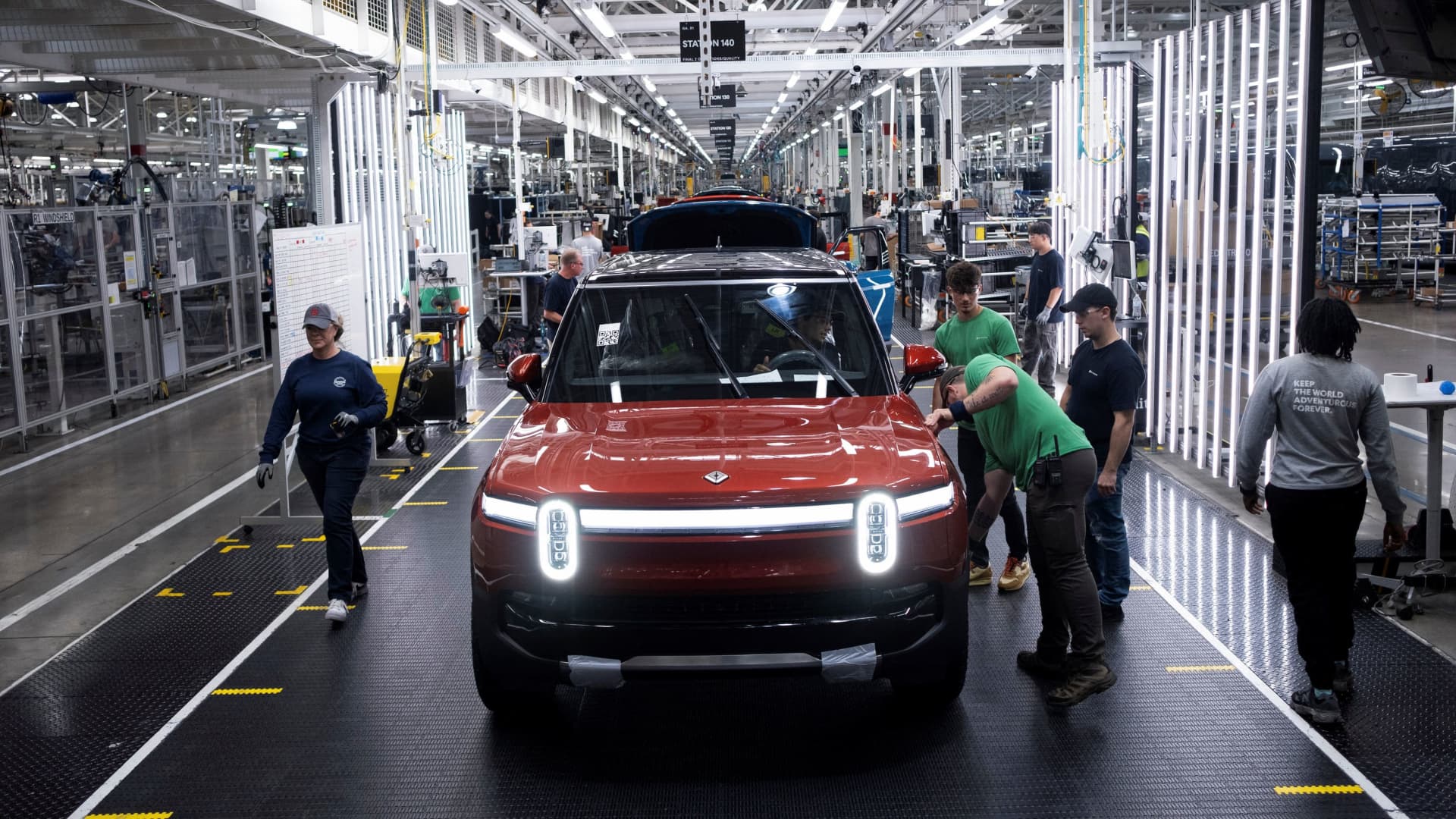Rivian’s Strategic Pivot: Managing Tariffs and Market Dynamics
In the dynamic world of electric vehicles (EVs), Rivian stands at a crossroads. The company has recently unveiled a substantial revision to its 2025 delivery targets and increased expected spending, all while grappling with escalating tariff pressures. This report explores the ramifications of these changes, the market’s response, and the strategic initiatives Rivian is undertaking to steer through these hurdles.
Revised Delivery Targets and Increased Expenditures
Rivian’s updated outlook for 2025 projects deliveries between 40,000 and 46,000 units, a significant drop from earlier projections. Concurrently, the company anticipates spending between $1.8 billion and $1.9 billion, underscoring the financial pressures it confronts. Several factors contribute to this reduction in delivery targets, including supply chain interruptions, escalating raw material costs, and the impending threat of tariffs on imported vehicles and auto parts.
The Tariff Conundrum
Tariffs, especially those enforced by the U.S. administration, present a substantial risk to Rivian’s operational and financial landscape. The upcoming increase in tariffs on imported batteries, scheduled for May, is expected to significantly elevate production costs. This cost escalation could dampen demand for Rivian’s EVs, further complicating the company’s delivery forecasts.
Analysts have swiftly responded to these developments. Bernstein, for example, has maintained its Underperform rating for Rivian, slashing its price target to $6.10. This represents a potential 47% decline from Rivian’s last closing price of $11.47. Bernstein’s forecast highlights the financial hurdles Rivian faces, particularly in the context of tariff pressures.
Market Volatility and Analyst Divergence
The market’s reaction to Rivian’s revised guidance has been a mix of optimism and caution. Initially, Rivian’s shares surged by as much as 7% in extended trading, but later settled with a modest gain of about 1%. This volatility mirrors the uncertainty surrounding Rivian’s future trajectory.
Analysts have offered varied perspectives. Baird, for instance, has adjusted its price target to $14.54, aligning with the average forecast. Conversely, Bernstein has taken a more pessimistic stance, setting Rivian’s target at $6.10. This disparity in analyst opinions reflects the multifaceted nature of Rivian’s situation and the wide range of potential outcomes.
Strategic Initiatives and Future Prospects
Amidst these challenges, Rivian is not stagnant. The company has earmarked $120 million to bring crucial parts suppliers closer to its Illinois plant. This strategic move aims to mitigate supply chain disruptions and ensure a steady influx of components for its manufacturing processes.
Furthermore, Rivian is prioritizing cost-reduction measures to bolster its financial stability. The company anticipates achieving a modest gross profit in 2025, a positive indicator amidst the turmoil. This profit is expected to stem from slashing raw material and supply chain costs, demonstrating Rivian’s dedication to operational efficiency.
Navigating the Road Ahead
As Rivian charts its course through these tumultuous times, several pivotal factors will shape its future. The resolution of the tariff dispute, the company’s ability to adapt to supply chain disruptions, and its success in implementing cost-cutting measures will all be instrumental. Additionally, Rivian’s strategic investments in its manufacturing capabilities and supplier relationships will be crucial in securing long-term viability.
Conclusion: A Crucial Turning Point
Rivian’s decision to trim its 2025 delivery targets and boost expected spending amidst tariff pressures signifies a critical juncture for the company. While the obstacles are formidable, Rivian’s proactive measures and strategic investments offer a beacon of hope. The forthcoming months will be decisive in determining whether Rivian can endure the storm and emerge stronger. As the EV industry continues to evolve, Rivian’s journey will exemplify the resilience and adaptability essential for thriving in a rapidly changing market.

